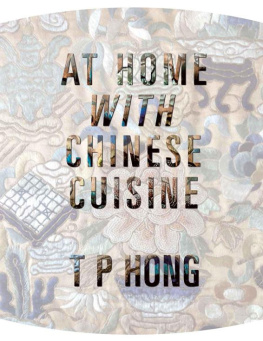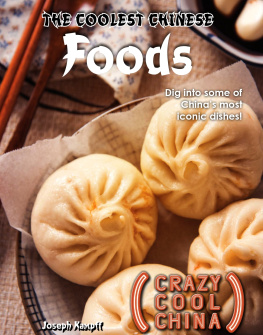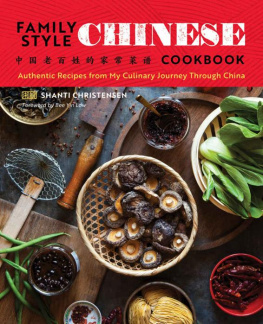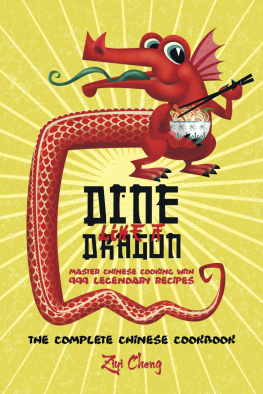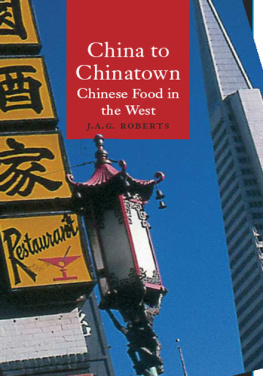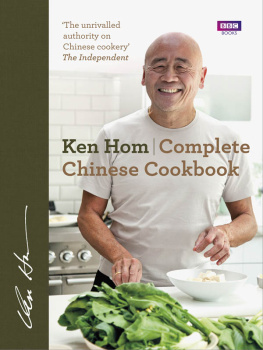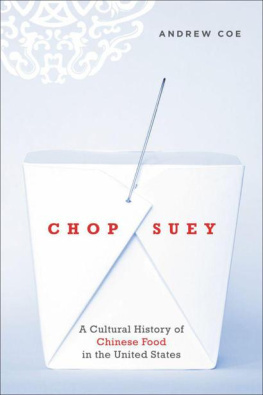AT HOME
WITH
CHINESE
CUISINE

T P HONG
Dr T P Hong was born in Taiwan. After completing her MBA degree in the USA, she came to the UK and completed her law degrees. After an international career in the pharmaceutical industry, she decided to follow her passion for food and wine and moved into the food-and-wine industry. She was trained as a cuisine chef at Le Cordon Bleu in Paris and completed their wine courses as well. She has worked in Beijing and Shanghai in recent years, specialising in menu design and food-and-wine matching.
AuthorHouse UK
1663 Liberty Drive
Bloomington, IN 47403 USA
www.authorhouse.co.uk
Phone: 0800.197.4150
2014 T P Hong. All rights reserved.
No part of this book may be reproduced, stored in a retrieval system, or
transmitted by any means without the written permission of the author.
Published by AuthorHouse 12/15/2014
ISBN: 978-1-4969-7777-9 (sc)
ISBN: 978-1-4969-8556-9 (e)
Because of the dynamic nature of the Internet, any web addresses or links contained in this book may have changed since publication and may no longer be valid. The views expressed in this work are solely those of the author and do not necessarily reflect the views of the publisher, and the publisher hereby disclaims any responsibility for them.

To my parents
for planting the seeds of love for food in me
Map of China

Timeline for China and Europe

Contents
Be it a part of our upbringing since childhood, or a conscious act in our adult life to learn to enjoy what we eat; be it our curiosity or be it a necessity in our career to be in the know, once we start the exploration of food proper, it will remain a pleasure for life. And only a dish prepared with care and enjoyment is a dish worthy of all our senses working in harmony, for its flavour, our health, and dining pleasure.
During the twenty plus years of living in the United States and the United Kingdom, I have listened to people in the know talking about Chinese cuisine being amongst the most sophisticated and diverse in the world. Along with French cuisine, it is synonymous with fine dining. But the appreciation for the time-honoured Chinese dishes, or even the mere awareness of dishes that go beyond GuangDongnese (Cantonese) and SiChuan cuisines, seems elusive among the majority of the general public in the West. I have often asked myself what information people need in order to have to become more aware of the large repertoire of Chinese dishes and to appreciate their subtlety so that they will consider incorporating this style of food preparation into their daily diets.
Throughout the years of the Cultural Revolution in the 1970s, traditional attitudes in China towards culinary pride and prowess were side-lined, and many professional skills and culinary literature were lost. With increasing prosperity over the last three decades, there has been a major, state-led effort to restore them and to make up for lost time. During my numerous business trips to China, I often heard talks from the media and opinion leaders in the hospitality industry of the thousands of years of Chinese civilisation and its unique culinary culture that deserved international recognition. But I seldom heard or read much in the way of in-depth discussion as to why this should be the case or how to let it be known. I would think that reaching out to offer the opportunity for Chinese cuisine to be properly understood is necessary. I therefore took upon myself this task of offering an introduction of Chinese cuisine to my readers. This book is my first step forward towards achieving this goal.
In order to equip myself with the knowledge, the skills, and the confidence to talk about Chinese food in the context of international cuisines, I decided to venture into food and wine full time in 2004. In preparation for writing a book about Chinese food, I thought the best place to start was to dive into classic French cuisine and wine in Paris in order to learn about what lies behind the recognition it receives and its positioning in the culinary world of choice, competition, and coexistence. It also provided me with the experience of working in professional kitchens. Since then, I have spent five years working in the wine industry in China and have collected volumes of material for the writing of this book.
I was born in the first generation of mainlander Chinese in Taiwan. The relocation of the Nationalist Government (KMT) in the 1940s to Taiwan brought with it the skills and experience of many top chefs from all over China. They offered the flavours of traditional Chinese cuisine that alleviated the homesickness of those who found themselves in a foreign land. They also unwittingly played a part in preserving the culinary culture that fell into abeyance in the following years of political instability. For my generation, they were the best teachers to give us the elementary education of gastronomy and Chinese cuisine proper.
What I did not fully realise until I started travelling in China was the impact of my parents culinary upbringing on me. I was instinctively familiar with the classic dishes I came across there. I recall my parents taking us children to the best restaurants, with chefs from different provinces in China. Father emphasised that we should know our heritage by heart, including the culinary tradition. When the young generation came along in our family, we followed suit to work on them in the same way without making much of a fuss. The knowledge of food provides us all with a common language to connect with the people, the culture, the economy, and even the politics of the place we travel to and has played a part in guiding us to enjoy and settle in wherever we stayed. I hope this book will do the same for my readers, helping them to feel at home when travelling into the world of Chinese cuisine.
Since I started to work on this book, I have been looking for a sentence to describe the essence of Chinese cuisine. I could finally identify it by the time I finished the first draft. Chinese cuisine is about dining not only for flavour, but also for health . The deep-rooted link between food and health has long been recognised among different cultures. The Chinese have taken it further than most and have made it an intrinsic part of their culinary heritage. The nourishing qualities and the therapeutic functions of what we eat are part and parcel of the considerations in food choices. The centuries-old advice of a diet of variety, seasonality, and moderation remains as valid today as when they were first envisaged more than three thousand years ago.
However, going beyond basic survival and eating for energy, we dine for the pleasure found in flavour.It is the enjoyment of the colour, the aroma, the tastes, the texture, the sound of food, and the presentation of the food served at the right temperature that gives us what the Chinese describe as flavour.
In China, food preparation starts with the pre-cooking stage of purchasing the ingredients, deciding on the cooking methods, and paying attention to the knife work and the marinade or blanching as required. The actual cooking involves controlling the appropriate cooking temperature, making sure the ingredients go into the wok in the right sequence, and ensuring that the dish is served at the right temperature. Both professional chefs and domestic cooks usually go through these steps instinctively without noticing it, but it can involve a meticulously planned and coordinated sequence when it comes to preparing dishes for a special occasion such as a state banquet. Either way, it is a thought process that provides a framework within which we are flexible to make choices in situ. Chinese food preparation is not a step-by-step, follow-the-recipe exercise. This thought process is a framework within which the individual can find room for self-expression.
Next page
